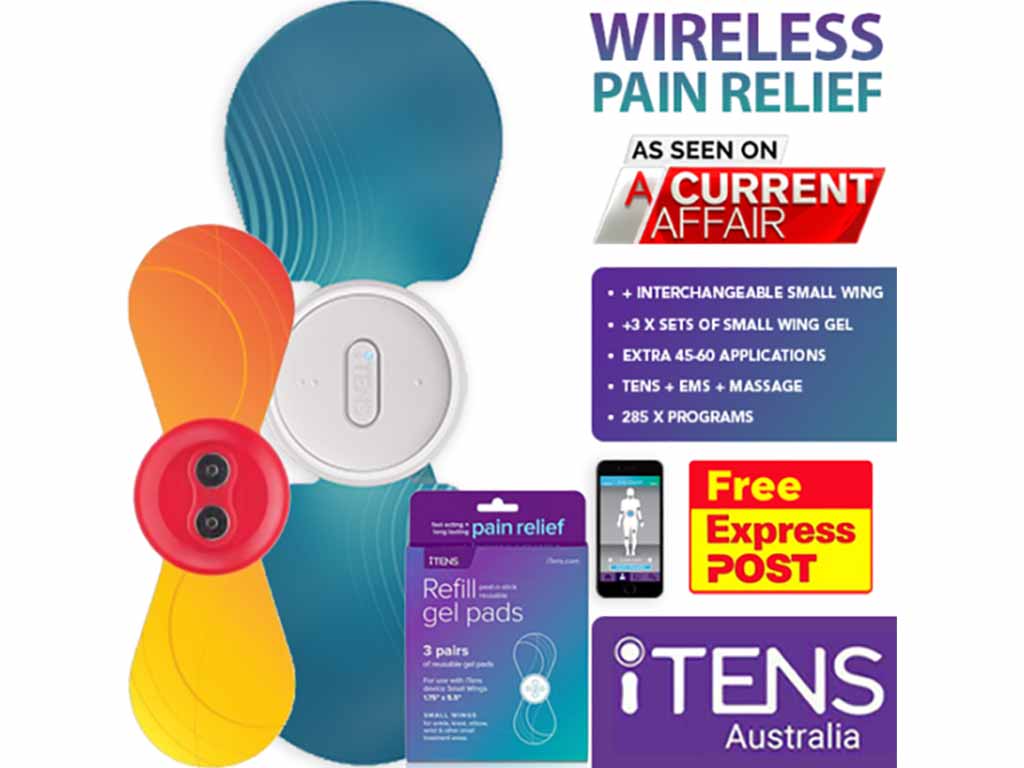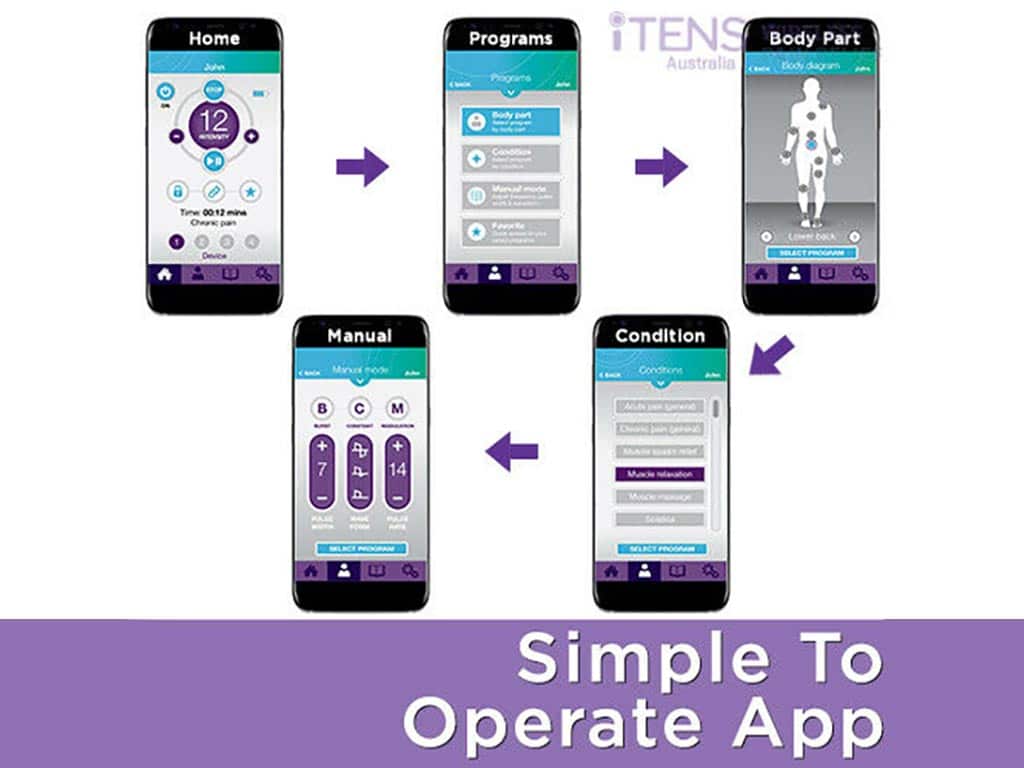
Transcutaneous Electrical Nerve Stimulation TENS is a method of pain relief. It uses a device to deliver electrical currents through electrode pads placed on the skin. Accordingly, the mechanism of action of TENS involves two main theories. The pain gate mechanism and the Endorphin Release Theory. Furthermore, TENS therapy presents benefits. It is non-invasive, drug-free, and customisable. Additionally, TENS is versatile. It can treat various types of pain, including acute pain and chronic pain.
Painful conditions affect millions of people worldwide. It leads to reduced productivity and lowered quality of life. While pain medications are a standard solution, they often come with side effects and the risk of dependency. As a result, many are turning to alternative pain management strategies like TENS. Pain clinics, physical therapists, and healthcare professionals often recommend it. This article will present the mechanisms of action of TENS, its benefits, and the treatable pain types.
Mechanisms of Action of Electrical Nerve Stimulation TENS
The operation of Transcutaneous Electrical Nerve Stimulation TENS centres around two fundamental mechanisms. Firstly, it engages the Gate Control Theory. It posits that the nervous system has a limited capacity for transmitting information. The TENS device floods these pathways with non-painful electrical impulses. Thus, it effectively closes the “gate” to pain messages. The brain receives fewer pain signals.
Secondly, TENS encourages the production of endorphins. These are natural substances in the body that mimic the pain control provided by drugs like morphine without the risk of side effects. Nevertheless, the increase in endorphin levels brought about by electrical pulses leads to a reduction in pain intensity. Also, it contributes to prolonged relief and promotes a sense of well-being.
Besides these primary mechanisms, the electrical stimulation also improves blood flow to the treatment region. Enhanced circulation delivers more oxygen and nutrients. It supports the healing process and further reduces discomfort. Overall, this three-pronged approach alleviates discomfort and supports the natural healing mechanisms of the body. It offers a comprehensive treatment of pain.
Frequencies and Intensities
- Frequencies: Refers to the rate at which electric currents are sent to the body, measured in Hertz (Hz). TENS devices operate across low (below 10 Hz) and high (above 50 Hz) frequencies. Low-frequency TENS (acupuncture-like TENS) trigger the body to release endorphins. It is particularly effective for deep, persistent discomfort. Meanwhile, high frequencies work rapidly, offering immediate relief. It functions based on the Pain Gate Theory
- Intensities: Refers to the strength of the electrical impulses, measured in Milliamperes (mA). Users can adjust the intensity to their comfort level. The key is to set the intensity high enough to be effective without causing discomfort.

Benefits of Electrical Nerve Stimulation TENS
Transcutaneous Electrical Nerve Stimulation TENS shines in its versatility. It handles different pain characteristics. Accordingly, its non-invasive nature is a significant advantage. It provides relief without surgical interventions or the risk associated with invasive procedures. Furthermore, TENS is drug-free. Thus, it avoids potential side effects and dependencies that can arise from long-term drug use.
The therapy offers targeted relief. It allows users to place the electrode patches directly on or near the treatment area. It ensures that the therapeutic effects are concentrated where they are most needed. Customisability is one of the most valued features of TENS treatment. Users can adjust the pulse frequency, intensity, and duration. It tailors the therapy to specific needs and comfort levels.
Moreover, TENS therapy is economically viable. Compared to ongoing medication or physical therapy session expenses, it is a cost-effective option. Also, TENS serves as an adjunctive treatment. It can be used with other pain management techniques to enhance overall effectiveness. Additionally, TENS treatment is associated with minimal, controllable side effects.
Potential Side Effects
Skin irritation often results from prolonged use of electrodes in the same area or from the improper maintenance and cleanliness of the electrodes. To mitigate this, professionals recommend regularly cleaning the skin before application and periodically checking the skin. Accordingly, allergic reactions constitute another potential side effect. These can emerge from sensitivity to the electrode patches. A solution to this is to use hypoallergenic pads.
In some cases, individuals may experience muscle twitching. Although generally harmless and temporary, excessive muscle twitching can lead to discomfort. Adjusting the settings and ensuring proper electrode placement can help reduce this issue.

Types of Pain Treated with Electrical Nerve Stimulation TENS
Transcutaneous Electrical Nerve Stimulation TENS is a versatile therapy for managing various types of pain. Firstly, TENS can treat chronic pain. It persists for months or even years. It may include fibromyalgia, backaches, and arthritis. Secondly, TENS can address sudden acute pain. It is a direct result of postoperative pain, labour pain, period cramps, tension headaches, and injuries.
Thirdly, TENS can aid musculoskeletal pain. It involves the bones, muscles, tendons, ligaments, and nerves. Conditions such as osteoarthritis and rheumatoid arthritis fall into this category. Fourthly, neuropathic pain benefits from the specialised approach of TNS. It arises from nerve damage. It may include diabetic neuropathy, phantom pain, nerve entrapment syndromes, and sciatica.
Lastly, muscular discomfort can be relieved through TENS therapy. It often arises from overuse, stress, or minor injuries. TENS aids in flushing out lactic acid and promotes healing by stimulating the muscle tissues. It reduces inflammation and alleviates soreness. In essence, TENS therapy stands out as a multifaceted approach to pain management, capable of addressing pain in people.
When to See a Doctor?
Foremost, one should see a doctor before starting TENS therapy if there is an undiagnosed pain condition. A professional can help diagnose the underlying cause of the condition, ensuring TENS is an appropriate treatment for pain. Secondly, individuals with pre-existing conditions (like heart problems, epilepsy, pregnant women) should consult their doctor before using TENS.
Additionally, if someone experiences an unexpected increase in discomfort or new symptoms after using TENS, they should stop using the device and consult a healthcare provider. It could indicate that the TENS therapy is not suitable for their particular condition if the device is not being used correctly.
Conclusion
Overall, Transcutaneous Electrical Nerve Stimulation TENS is a valuable therapy for managing discomfort. It utilises a device to send electrical currents to the body. It sends the impulses through electrode patches placed on the skin. Accordingly, there are mechanisms of action behind TENS. It includes the Pain Gate Theory and Endorphin Release Theory. Also, the electrical pulses can improve blood circulation. Additionally, TENS employs different frequencies (low and high) and intensities.
Furthermore, TENS therapy offers a multitude of benefits. It is versatile, non-invasive, drug-free, customisable, and economically viable. It provides targeted relief and can adjunct other techniques. With such mechanisms and benefits, TENS can treat various conditions. It can manage chronic and acute conditions. Moreover, it can address musculoskeletal, muscular, and neuropathic conditions. However, knowing the potential side effects and when to see a doctor is crucial for safe TENS therapy.







